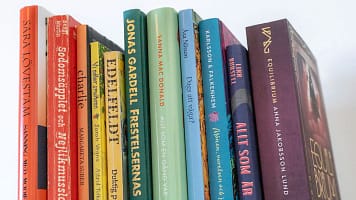A new analysis of queer culture in contemporary Chinese art and literature and how it is driving political and social activism has been published by the pioneering University of Nottingham media studies scholar Hongwei Bao.
Queer China: Lesbian and Gay Literature and Visual Culture under Postsocialism is an accessible new book that examines the latest artistic and cultural production in China – from gay/comrade literature, to lesbian painting and girls’ love fan fiction, gay paper cutting art, live theatre, digital films and experimental documentaries.
The book reveals a vibrant picture of queer communities and cultures from their inception in post-Mao China to the decriminalisation of homosexuality in 1997 and the ongoing campaign for legal recognition of same-sex relationships and LGBTQ rights.
Queer China is the result of a decade-long multi-disciplinary research undertaken by Hongwei Bao. It breaks new ground and brings a non-Western perspective to the wide variety of artistic activity currently reflecting LGBTQ life in contemporary China. The book weaves together original historical and archival research, analysis of texts, media and discourse, with extensive interviews and ethnography.
Dr Bao said: «In this book I have set out to de-Westernise queer theory and cultural studies of LGBTQ communities in China and East Asia more widely. I wanted to show how crucial a role the artistic culture of these communities plays in queer politics – the two aspects are to a large extent mutually dependent. I argue that political activism and social movements are not just about agitation, lobbying and mass mobilisation – community-based cultural and artistic production is just as integral to the political and legislative process».
«The literature and visual culture of Chinese LGBTQ communities can have a profound impact on wider popular culture, helping to disrupt rigid beliefs and traditional ways of thinking about all identities and their places in society».
In a richly illustrated chapter, Dr Bao analyses the artwork of Chinese queer paper cutting artist Xiyadie, also known as the ‘Siberian Butterfly’. Using the traditional art form of paper cutting to represent homoerotic themes, Xiyadie’s artwork challenges the popular belief that gay identity is a Western phenomenon and has nothing to do with China’s cultural tradition. Depicting rural and migrant workers’ lives, Xiyadie’s work also challenges the hegemony of a global queer culture dominated by urban and middle-class experiences.
In another fascinating chapter, Dr Bao documents a same-sex wedding photoshoot in central Beijing on a Valentine’s Day, highlighting the role of public performance in increasing LGBTQ visibility in Chinese society. He also points out that such a public performance is strategic and culturally sensitive. Activists must often take into careful consideration China’s cultural tradition and specific social circumstances. Although a pride march is banned in China, LGBTQ activists still come up with ingenious ways to bring queer culture to a space space – through a wedding photoshoot in this case.
Examples like these convincingly demonstrate that art and culture have a positive role to play for LGBTQ people in terms of identity formation, community building and social activism; they also help shape a more pluralist Chinese society. They offer a complex and nuanced picture of China beyond government discourses and newspaper headlines.
Dr Bao’s new book has been well received in academia and by China’s LGBTQ communities. A video interview in Chinese with Dr Bao about the book has had 310,000 viewings on the Chinese social media Weibo.
Chinese queer filmmaker Popo Fan, whose film New China, New Marriage is discussed in the book, commented: ‘Covering a relatively long period of forty years, Dr Bao’s book offers an in-depth analysis of the highly invisible queer culture in contemporary China. I am pleased that my work is documented in the book and will be introduced to a larger international audience.’
Chinese lesbian artist Shi Tou, whose artwork appears on the book cover and is also discussed in the book, said: ‘Queer China is a pathbreaking book about the burgeoning queer culture in the PRC. By working closely with Chinese queer artists and critically engaging with their artworks, this book documents the rich and often neglected history of China’s LGBTQ communities and culture.’
Queer China spans multiple academic areas including literary and cultural studies, media and communication, film and screen studies, contemporary art, theatre and performance, gender and sexuality as well as China/Asia studies, cultural history and geography, political theory and the study of social movements.
Hongwei Bao is an Associate Professor of Media Studies at the University of Nottingham, UK. His first book Queer Comrades: Gay Identity and Tongzhi Activism in Postsocialist China was published in 2018.




